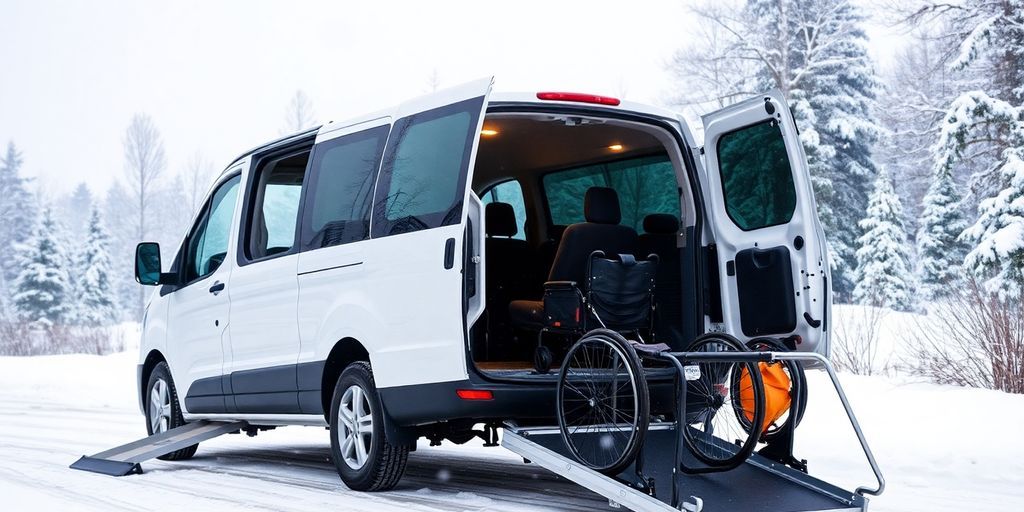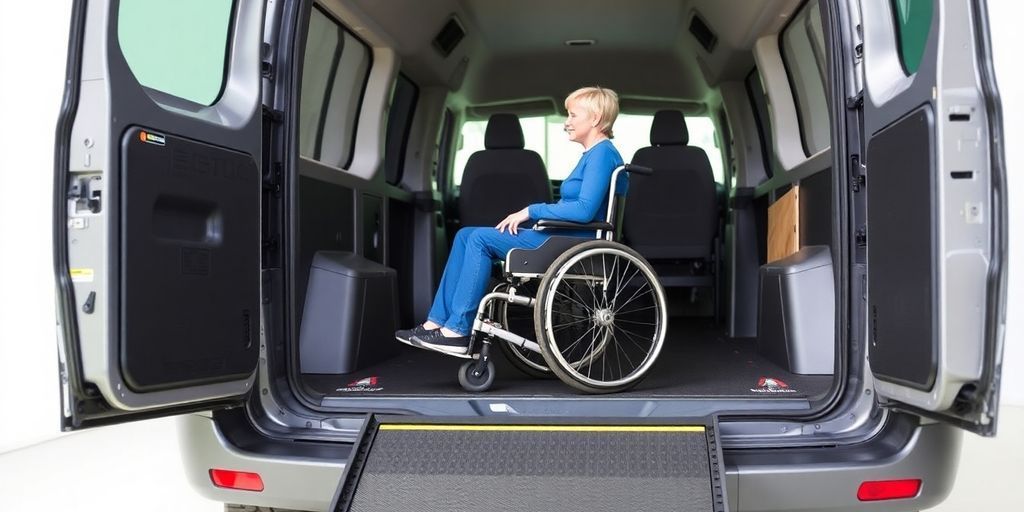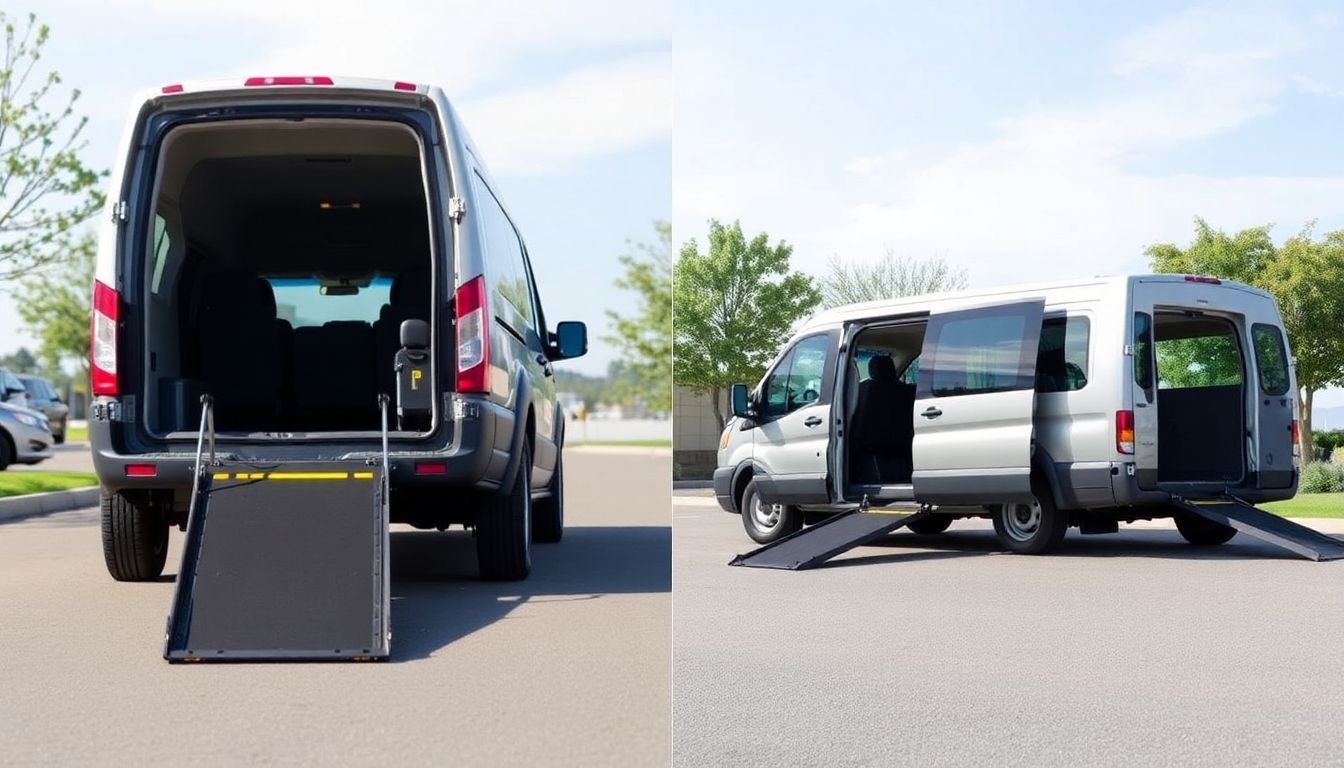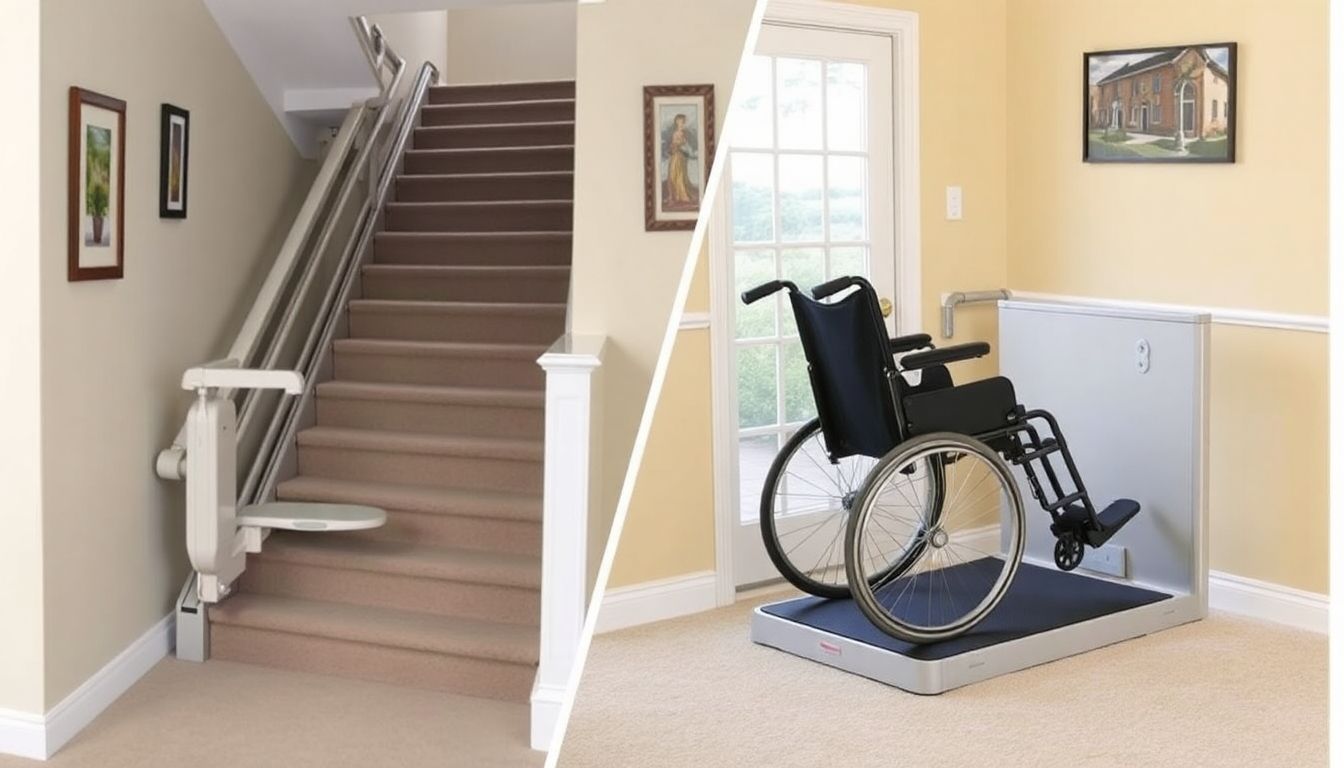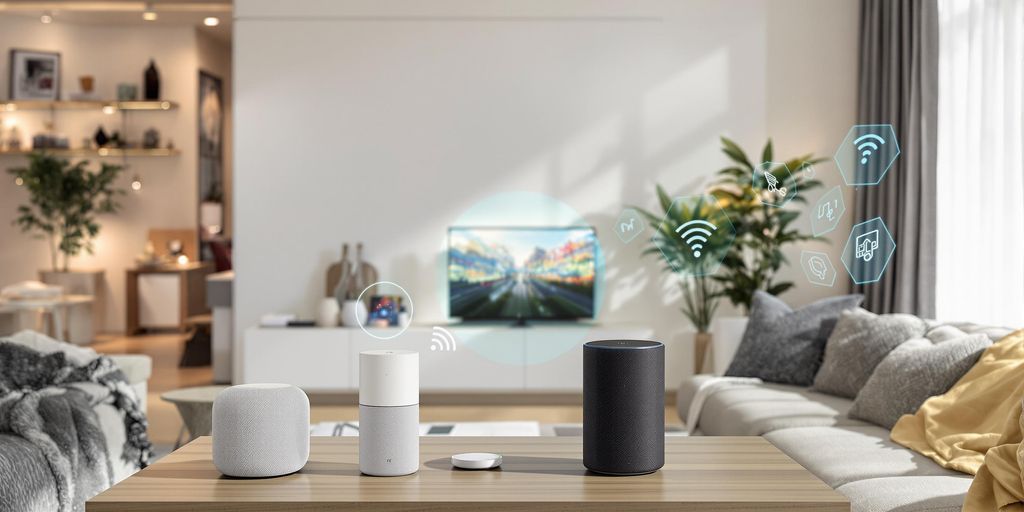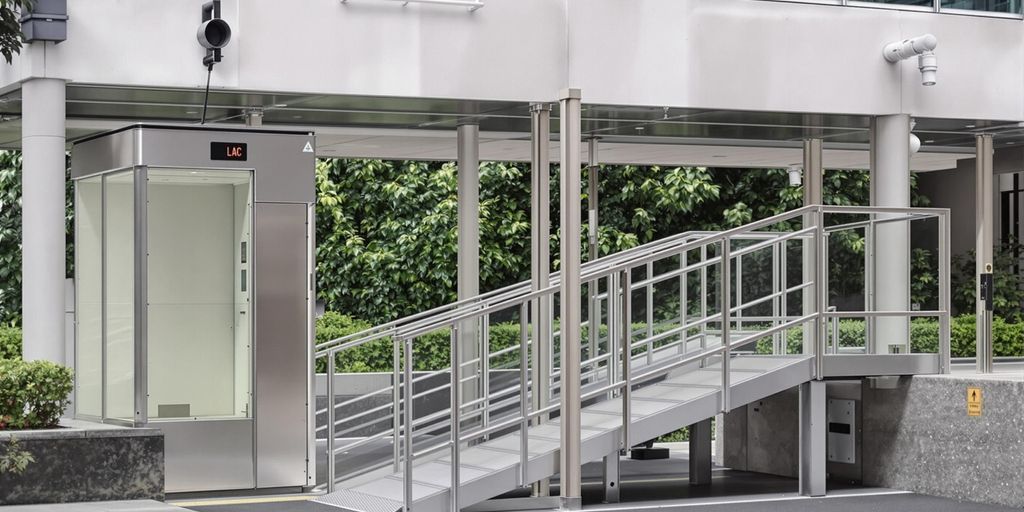Implementing Non-Slip Flooring: Crucial Information for Making Your Home Safer


Ever thought about how much safer your home could be with non-slip flooring? It's one of those things you don't really consider until someone takes a tumble. Whether it's the hallway, bathroom, or kitchen, adding non-slip flooring can make a huge difference. It's not just about avoiding accidents but also about feeling secure in your own space. And if you have family members with mobility issues, it's even more important. Let's dive into why non-slip flooring solutions are essential for home safety and how they can help, especially when it comes to flooring for the disabled.
Key Takeaways
- Non-slip flooring can significantly reduce the risk of falls in high-traffic areas like kitchens and bathrooms.
- There are various types of non-slip flooring materials, including textured vinyl and rubber mats.
- Installing non-slip flooring is crucial for homes with elderly or disabled residents.
- Proper maintenance of non-slip flooring ensures long-lasting safety benefits.
- Budget-friendly non-slip options are available that don't compromise on safety.
Understanding Non-Slip Flooring Solutions
Types of Non-Slip Flooring Materials
When it comes to non-slip flooring, there are several materials to choose from, each offering unique benefits. Let's break down some of the most popular options:
- Non-Slip Tiles: These are perfect for wet areas like bathrooms and kitchens. The textured surface provides excellent grip, reducing the risk of slipping. Non-slip tiled floors enhance safety by offering increased friction and traction, significantly lowering the risk of slips and falls.
- Rubber Flooring: Known for its durability and comfort, rubber flooring is ideal for gyms and playrooms. It provides a cushioned surface that is both slip-resistant and easy on the feet.
- Vinyl Flooring: This material is water-resistant and comes in various textures and designs, making it a versatile choice for any room in the house.
Benefits of Non-Slip Flooring
Installing non-slip flooring in your home comes with a host of benefits:
- Safety First: The primary advantage is accident prevention. By providing a stable surface, non-slip flooring minimizes the risk of falls.
- Durability: Many non-slip options are designed to withstand heavy foot traffic, making them long-lasting and cost-effective.
- Aesthetic Appeal: With numerous styles and finishes available, you can choose a non-slip floor that complements your home decor without sacrificing safety.
Investing in non-slip flooring is not just about safety; it's about peace of mind. Knowing that your floors are secure allows you to focus on other aspects of your home.
Common Areas for Non-Slip Flooring Installation
Certain areas in your home are more prone to slips and falls, making non-slip flooring a wise choice:
- Bathrooms: With water and soap, bathrooms can become slippery quickly. Non-slip tiles or mats are essential here.
- Kitchens: Spills are common in the kitchen, so having a floor that provides good traction is crucial.
- Entryways: These areas often get wet from rain or snow, increasing the risk of slipping. Non-slip flooring can help prevent accidents as you enter or exit your home.
Enhancing Home Safety with Non-Slip Flooring
High-traffic areas in your home, like hallways and entrances, can be risky spots for slips and falls. Implementing non-slip flooring in these areas is a smart move. Consider using materials like textured vinyl or rubber, which offer a good grip even when wet. Here are some tips:
- Use non-slip flooring paint to add a textured surface, especially in hallways.
- Regularly check for loose rugs or carpets and secure them with non-slip pads.
- Keep these areas well-lit to ensure visibility.
Prioritizing safety in these zones can significantly reduce the chances of accidents, making your home a safer place for everyone.
Non-Slip Solutions for Bathrooms and Kitchens
Bathrooms and kitchens are notorious for being slippery. Water spills and steam can make these areas hazardous. Installing non-slip tiles or applying a non-slip treatment can greatly improve safety. Here’s how you can make these spaces safer:
- Opt for textured tiles or vinyl flooring with a non-slip finish.
- Place anti-slip mats in front of sinks and stoves.
- Install grab bars near bathtubs and showers for extra support.
Making these changes not only enhances safety but also adds to the longevity of your flooring by preventing wear and tear caused by slips.
Integrating Non-Slip Flooring with Home Design
You don’t have to sacrifice style for safety. Non-slip flooring comes in various designs and colors, allowing you to maintain your home's aesthetic. Here’s how to seamlessly integrate it into your home design:
- Choose colors and patterns that complement your existing decor.
- Consider non-slip rugs that match your room’s theme.
- Use non-slip stair treads that blend with your staircase design.
By selecting the right materials and designs, you can ensure that your home remains both stylish and safe. This way, you create a living space that’s not only functional but also visually pleasing.
Choosing the Right Non-Slip Flooring for Your Home
Factors to Consider When Selecting Flooring
Picking non-slip flooring isn't just about grabbing the first option you see. You need to think about a few things first:
- Surface Material: Different surfaces need different solutions. For instance, a rubberized mat might work wonders in a bathroom, but won't cut it in a living room.
- Slip Resistance Rating: Check the ratings to see how well the flooring prevents slips. Higher ratings are better, especially in busy areas.
- Durability: If you've got kids, pets, or a bustling household, you'll want something that can take a beating without losing its grip.
- Aesthetics: While safety is key, you don't want your floors looking like a hospital. Look for options that blend well with your home decor.
Remember, choosing the right flooring can prevent accidents and keep your home looking stylish.
Comparing Different Non-Slip Flooring Options
When it comes to non-slip flooring, there's a lot to choose from. Here's a quick rundown:
- Vinyl Flooring: Choosing vinyl flooring involves balancing safety and style. It's essential to select slip-resistant options that do not sacrifice aesthetic appeal.
- Tiles with Texture: Great for bathrooms and kitchens, these provide grip even when wet.
- Rubber Flooring: Perfect for playrooms or home gyms. It's soft, durable, and keeps slips at bay.
Expert Tips for Making the Best Choice
Here's what the pros say:
- Consult a Professional: Sometimes, it's worth getting an expert opinion to ensure your flooring is both safe and stylish.
- Consider Installation: Some flooring types are a pain to install. If you're DIY-ing, pick something manageable.
- Think Long-Term: While some options might be cheaper upfront, consider the long-term costs like maintenance and replacement.
Picking the right non-slip flooring isn't just about safety; it's about creating a home you love. Take your time, weigh your options, and don't be afraid to ask for help.
Implementing Non-Slip Flooring for Disabled Accessibility
Key Features of Accessible Flooring
When it comes to making your home safer for those with disabilities, choosing the right flooring is a big deal. Accessible flooring needs to be safe, durable, and easy to move on. Here are some key features to look for:
- Slip Resistance: This is crucial. Floors should have enough grip to prevent falls, especially in wet areas like bathrooms and kitchens.
- Smooth Transitions: Floors should be level and transitions between different types of flooring should be smooth to avoid tripping.
- Durability: The flooring should withstand wear and tear, especially in high-traffic areas.
Adapting Entryways and Exits
Getting in and out of your home should be easy for everyone. Here’s how you can adapt your entryways and exits to be more accessible:
- Install Ramps: Ramps are essential for wheelchair access. They provide a smooth transition from the ground to the door.
- Handrails: Adding handrails on both sides of stairs or ramps offers extra support and safety.
- Improved Lighting: Make sure entryways are well-lit to help those with vision impairments.
Small changes like these can make a big difference in making your home more welcoming and safe for everyone.
Ensuring Safety in Multi-Level Homes
Living in a multi-level home can be tricky if you have mobility issues. Here are some tips to make it safer:
- Stairlifts: Consider installing a stairlift. It’s a practical solution for moving between floors without the risk of falling.
- Non-Slip Stair Treads: Add these to stairs to provide better grip and reduce slip risks.
- Elevators: If possible, installing a home elevator can be a game-changer, providing easy access to all levels of the house.
Making these adjustments not only improves safety but also enhances the quality of life for individuals with disabilities. Remember, it’s all about creating a space where everyone can feel comfortable and secure.
Maintaining and Caring for Non-Slip Flooring
Regular Cleaning and Maintenance Tips
Keeping your non-slip flooring in tip-top shape doesn't have to be a chore. Regular cleaning is key to maintaining its slip-resistant properties. Start by sweeping or vacuuming to remove loose dirt and debris. Next, mop the floor with a gentle cleaner that's safe for non-slip surfaces. Avoid harsh chemicals that might wear down the anti-slip coating. For stubborn stains, a soft brush can work wonders without damaging the floor. Remember, consistency is your friend here—regular upkeep prevents grime build-up and keeps your floor safe.
Addressing Wear and Tear
Even the best non-slip flooring can show signs of wear over time. It's crucial to inspect your floors periodically for any signs of damage like scratches or worn patches. If you notice any issues, address them promptly to prevent accidents. You might need to reapply a non-slip coating or replace damaged tiles. Don't wait until a small problem becomes a big hazard. Staying on top of maintenance not only prolongs the life of your flooring but also ensures it continues to provide the safety you need.
Professional Services for Flooring Maintenance
Sometimes, DIY just won't cut it. That's when professional maintenance services come into play. They can offer deep cleaning and restoration services that go beyond regular home care. Professionals have the tools and expertise to tackle tough stains and restore the slip-resistant finish effectively. They can also handle any necessary repairs or replacements, ensuring your flooring remains safe and functional. Consider scheduling a professional service annually to keep your floors in the best condition possible.
By keeping your non-slip flooring well-maintained, you not only extend its lifespan but also contribute to a safer home environment. It's all about taking those little steps that make a big difference in safety and peace of mind.
Cost and Budget Considerations for Non-Slip Flooring
Estimating Costs for Different Flooring Types
When it comes to non-slip flooring, costs can vary significantly based on the material you choose. Here’s a quick breakdown:
- Vinyl Flooring: This is generally the most budget-friendly option, costing between $2 to $5 per square foot. It's a good choice for those looking to cover large areas without breaking the bank.
- Rubber Flooring: Slightly more expensive, rubber flooring ranges from $3 to $8 per square foot. It's durable and ideal for areas that need a bit more cushioning, like gyms or playrooms.
- Non-Slip Paint: If you're considering a DIY approach, non-slip flooring paint is a versatile option. Prices range from $30 to $100 per gallon, making it a practical choice for various surfaces.
Budget-Friendly Non-Slip Solutions
Not everyone has the budget to replace entire flooring sections, but there are affordable alternatives:
- Non-Slip Mats: These can be placed in strategic areas like bathrooms or kitchens to prevent slips. Easily movable and affordable, they are a quick fix for slippery spots.
- Anti-Slip Tapes: Perfect for stairs or ramps, these tapes are easy to apply and provide extra grip where it's most needed.
- Temporary Coatings: These are less expensive than full replacements and can be applied to existing floors to enhance traction.
Long-Term Savings and Benefits
Investing in non-slip flooring might seem costly upfront, but it can save you money in the long run. Here's how:
- Reduced Accident Costs: By minimizing slip and fall accidents, you can avoid hefty medical bills and potential legal fees.
- Durability: Quality non-slip flooring options often last longer, reducing the need for frequent repairs or replacements.
- Peace of Mind: Knowing that your home is safer for family members and guests is invaluable.
Making a wise choice in non-slip flooring not only enhances safety but also proves to be a smart financial decision over time. It's about balancing immediate costs with long-term benefits, ensuring a safe and secure environment for years to come.
Innovative Non-Slip Flooring Technologies
Latest Advancements in Flooring Materials
In recent years, flooring technology has taken some giant leaps. Non-slip flooring materials are now crafted to be both functional and stylish. The latest materials are often made from composites that offer enhanced durability and slip resistance. For instance, some new tiles incorporate micro-textures that provide grip without feeling rough underfoot. These advancements mean you no longer have to choose between safety and aesthetics.
Smart Flooring Solutions for Enhanced Safety
Imagine a floor that can "talk" to you. Smart flooring solutions are making this a reality. These high-tech floors can detect pressure, alerting you if someone has fallen or if there's unusual activity. Some systems even connect to home automation networks, allowing for real-time monitoring and alerts sent directly to your smartphone. This technology is particularly beneficial in homes with elderly residents or those with mobility challenges.
Eco-Friendly Non-Slip Flooring Options
Going green is not just a trend—it's a necessity. Eco-friendly non-slip flooring options are becoming more popular as people look for sustainable home solutions. These floors are often made from recycled materials and are free from harmful chemicals. Options like bamboo, cork, and recycled rubber not only help the environment but also provide excellent slip resistance. Choosing eco-friendly flooring means you're doing your part for the planet while keeping your home safe.
Embracing innovative flooring technologies not only boosts safety but also adds value to your home. With the right choices, you can enjoy both peace of mind and a stylish living space.
Explore the latest in non-slip flooring technologies that keep you safe and stylish. Our innovative solutions are designed to prevent slips and falls, making your home or business a safer place. Don't wait—visit our website today to learn more and get a free quote!
Conclusion
Making your home safer with non-slip flooring is a smart move. It's not just about avoiding falls; it's about peace of mind. Whether you're young or old, having a secure footing can make a world of difference. So, take a good look at your floors and think about where you might need a little extra grip. Maybe it's the bathroom, the kitchen, or even the hallway. A few changes here and there can really help you feel more at ease in your own space. Remember, it's the small things that often make the biggest impact. So, why not start today? Your future self will thank you.
Frequently Asked Questions
What is non-slip flooring?
Non-slip flooring is a type of floor surface designed to reduce the risk of slipping. It often has a textured surface or special coating that provides better traction, making it safer to walk on, especially in areas prone to wetness or spills.
Where is non-slip flooring most useful in a home?
Non-slip flooring is particularly useful in areas like bathrooms, kitchens, hallways, and entryways. These places are more likely to get wet or have high foot traffic, increasing the risk of slips and falls.
Can non-slip flooring be stylish?
Yes, non-slip flooring can be both safe and stylish. There are many designs and materials available that can match your home decor while providing the safety benefits of non-slip surfaces.
How do I maintain non-slip flooring?
Maintaining non-slip flooring involves regular cleaning to remove dirt and debris that can reduce its effectiveness. It's important to follow the manufacturer's instructions for cleaning and maintenance to ensure it remains safe and durable.
Is non-slip flooring expensive?
The cost of non-slip flooring can vary depending on the material and brand. However, investing in non-slip flooring can save money in the long run by preventing accidents and reducing the need for repairs from falls.
Can I install non-slip flooring myself?
While some non-slip flooring options can be installed as a DIY project, others might require professional installation to ensure they are fitted correctly and provide the intended safety benefits. Always check the installation requirements before starting.

